15 Action Items Factory Owners Can Do to Attract a Younger Workforce

Posted on Nov 22, 2016 7:00 AM. 13 min read time
Keeping your manufacturing business in good shape means continually hiring and training new workers as others quit or retire. But with the drop in younger applicants to manufacturing jobs, you and other managers run the risk of retiring your company out of existence. It's imperative that you start attracting younger people to your company so you can continue to have a strong workforce. Here are 15 things you can do to get that process rolling now.
Action Item 1 - Show What Manufacturing Is Really Like
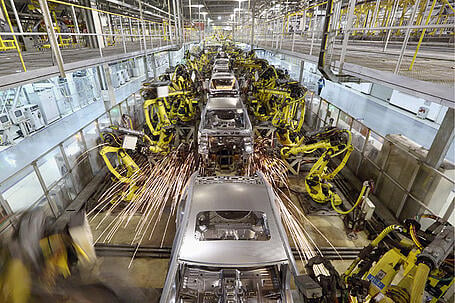
The popular image of manufacturing is that of rows and rows of people standing by rows and rows of conveyor belts and machinery, repeating the same task again and again and again -- not the most exciting way to spend most of the days of your life. While modern manufacturing still involves repetitive work, the duties of each worker are more wide-ranging and may include machine maintenance and product quality control. However, that new image is never going to spread unless you get the word out. Find a group of current employees, both young and old, new and experienced, and have them go on a series of talks and visits in classrooms and training centers to talk to people looking for jobs and to students looking for career paths. Meet with government employment departments, hold seminars at the unemployment office, and offer tours of your facility to people who have never been inside a manufacturing facility before. Seeing a real-life manufacturing process is much different than seeing an old movie that was likely edited specifically to make the work look boring.
Action Item 2 - Show How Lucrative the Industry Really Is
Turn on the news and you'll hear again and again that manufacturing in this country isn't doing well. Closures and losses dominate the news, and you have to show that those stories are a product of the media. Always keep up-to-date statistics with you and with anyone from your company who goes out to talk to the public about the industry. Make sure people know that manufacturing in the United States is doing well, providing almost 12 percent of the country's economic production. Wages remain high, and employment is still robust, although as older workers have been retiring, a skills gap has opened up -- and it's that skills gap that needs new workers to start training now.
Action Item 3 - Know Your Workers

If your workers feel like you don't understand who they are or what they need, you're not going to see a lot of employee loyalty. All manufacturers need to step back and look at their workforces. Knowing who has what skills, where the skills gap is largest, and how the work is affecting employees' lives is essential for avoiding productivity shortfalls.
Employers need to know who is working for them -- what the demographics are, how long people stay, and whether people's talents are being used wisely. If someone leaves the company for whatever reason, does that mean the company has lost valuable knowledge that no one else there can provide? Do you see more requests for equipment maintenance, for example, because you no longer have someone who can make little fixes and tweaks to keep the equipment running as smoothly? How quickly can the other employees learn the skills you just lost?
Sometimes employees are good workers but lack a steady base that can help them move up and thrive. Workers who do not speak English well, for example, may be very skilled but unable to communicate as well as needed. What can your company do to help these employees out, like offer more training in the employee's' first languages as well as more English as a Second Language training that focuses on the technical terms of the industry?
The future is something that younger workers often have on their minds. Is your company going to be around in the same form in a few years? Are you planning to do any major restructuring?
Even more important is the risk of outsourcing and automation. Are you going to end up removing part of the human workforce and replacing it with more machinery, or do you have active plans to retain and retrain people so that they can continue to play a productive role in your company? Are you going to send part or all of the manufacturing to another country soon? These have become crucial questions for younger people who, while aware that they now live in a more unpredictable world, would still like to be able to start planning their lives without the risk of much upheaval.
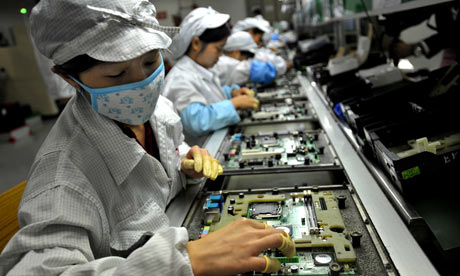
And what's more, how are you going to hire when a non-entry-level position opens up? Will you hire from outside, effectively creating a dead end for your current employees, or will you look internally first? What role will temp workers or visa holders play? Have you already looked at the costs of hiring all of these different types of employees?
Action Item 4 - Be Open About How the Company and Employees Are Doing
This is a two-pronged strategy. One is to be open with the employees about how they are doing, where they can improve, and how you can help them improve. You need to maintain an open line of communication so that any employees who feel underutilized or just like they're not quite fitting in with the work can come to you and see what they can do. Ask your employees to keep you up to date on any new work-related skills they acquire so that you know what the current skills base is.
In addition to that, keep employees in the loop about the workings of the company. Nothing can foster a sense of distrust faster than remaining secretive about how the company is doing and what plans are. Plus, there may come a time where you can't give answers except to hang on and wait out a change, for example; if you have been open before, your employees will be more likely to take your word for it regarding not having other information to give them.
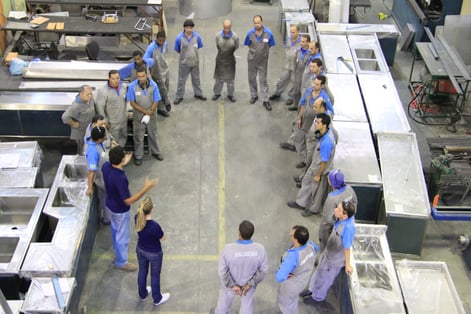
Being open about what's coming up can also help you retain workers. Younger workers, especially, who are generally more able to job hop, may decide to stay longer if they know what the future holds at the company.
Action Item 5 - Inclusiveness and Feedback
There's nothing wrong with maintaining a typical employee-supervisor-manager-type hierarchy in terms of positions and reviews. But younger employees don't want to feel excluded from what goes on at the company. They don't want to feel like they are being treated as trained seals. They also don't want to be blindsided by bad news or reviews.
You can make younger employees feel more welcome by creating a review process that enables people to give and receive feedback as often as they need to. Moderation does need to be emphasized; too much feedback could be seen as micromanaging or hectoring. But perhaps create a system where people can ask for feedback from anyone, allowing those who like to give feedback the chance to do so without pressuring those who prefer to stay quiet.
Action Item 6 - Keep Training Them
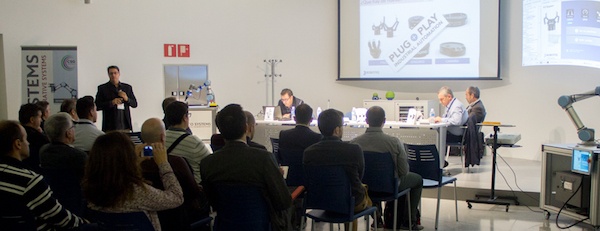
Lifelong employee loyalty is no longer the norm -- the Great Recession and outsourcing trends have shown that over and over again. As a result, an employee who remains loyal long-term is someone who finds value in staying with the company. For younger workers, that value often includes the ability to move up and learn more, and you need to provide the training and job opportunities that will allow them to do that. Even if there are no new developments in your company's niche, send employees for training in new software or for reviews of skills they have but might not be using as much. Be sure these trainings have substance; fluffy corporate retreats can be seen as a waste of time, but a conference that provides substantial information and education could be seen as very valuable. Also consider cross-training employees to enable you to stay productive in the event of a mass absence, such as during cold season. If employees feel valued, included, and indispensable, they may choose to stay longer at your company.
Action Item 7 - Get Involved in the Local Community
Name recognition plays a large part in how people see you as a potential employer. Even if you're a small manufacturer with one location, you can build your brand partly through becoming involved in the community. Not only should you send representatives to talk at school career days, but you should work to become a non-educational contributor as well. Sponsor festivals and charity runs, for example, and form programs for workers to take time off to volunteer at local schools. While you'll find employees of all ages who want to help out, millennials are particularly community-minded. Offering chances for them to get involved and make your organization a benevolent presence in the community is a fantastic way to attract younger workers.
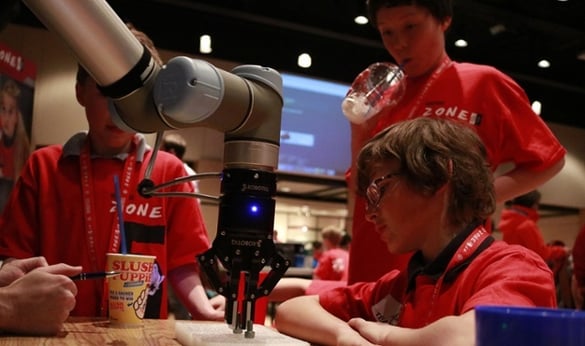
One effect of doing this is that the community can start to focus on your company. It can be seen as a good place for summer jobs and internships, and you can start to see generations working there as the children of current employees enter the workforce. You need to present your facility as a place where people can put their skills to use and support the community, rather than having to leave for a larger city or another state.
Action Item 8 - Cross-Mentoring and Training
On a related note, you can further the ties between the community and your company by having more technologically savvy people outside the factory work with those inside. If you have workers who haven't kept up with the latest technology, social media platforms, and more, you have an opportunity to have people in the community come in and train those workers. Such cross-training can create stronger bonds and make your company seem more like a part of the community family. This can be a great way for younger people to develop contacts and participate in community service.

It's also a fantastic way to expose younger people to manufacturing in general. The younger people see that the factory isn't a Victorian workhouse (as many factories seem to be portrayed popularly) and that the technology is extremely advanced.
Action Item 9 - Give Them a Reason for Being There Other Than the Money
There's something to be said about taking a job to gain some experience or get some money in your pocket. However, many younger people want to have some sense of purpose about their job, something more than just paying the bills and looking responsible. Personal values play a large role in millennials' attitude toward work, and they are not afraid to refuse work that doesn't hold up to those values. They need to feel their work contributes something to the company and often to society, and and they need to feel like more than drones. While any work has a purpose, technically, these workers need to be a part of the larger picture and know that their work isn't done in vain.
Sometimes this is easy to pull off. A government job can be seen as a way to influence policy and keep the country running. But for less esoteric jobs, such as manufacturing, the key may be to again get those younger workers more involved in the company. They need to see how their work affects the company's financial standing and the projected lifespan of the company. They need to know how their products are helping people outside your facility.
Action Item 10 - Provide Basic Structures That Can Be Modified
Employees have different working styles. Some want to get the job done and go off to take care of other things in their lives; others want to have a more relaxed schedule that allows them to handle personal things when needed. Establish basic rules for work time but allow for variation. For example, if your company usually runs three shifts of traditional 8-hour-per-day workers, expand that to include longer shifts for fewer days per week, or allow employees to partner up and trade shifts.

One issue that needs definite structure, though, is communication. There have to be communication trees that allow decisions at the top to reach everyone in the company, and there need to be standards set, such as no email on weekends, or use social media in only certain circumstances. Millennials (and really, all generations now) have become so used to the 24-hour electronic communication that's available that it's easy for information to spread, but also easy for work to intrude too much into personal time.
Action Item 11 - Delve Further Into Those Schedules
The advice to look at additional shift styles and shift-trading is about more than just making the workplace more attractive -- it can help with productivity and morale. Work-life balance has become so important, not just as a fad but for personal and family health as well, that you have to figure out new ways to make your employees' lives and the scheduled work match well. Go to your managers and supervisors and ask them what they've noticed about productivity throughout the day and week. Talk to workers as well about how they feel the shifts fit their lives. Ask all of them how they feel about working different types of shifts and whether a longer shift might be more or less problematic if it means more days off. If you find pronounced lulls, such as post-lunch slacking, that's something you have to take into consideration -- maybe a longer day overall with a longer lunch break will help that, or maybe offering employees makeup shifts could work (for example, someone who wants to take an extra hour to take a class after lunch can make up those five hours on a day they'd normally have off). Another option is to allow some workers to work from home if they don't have to be on an assembly line.
Action Item 12 - Branch out With Benefits
Your basic salary plus insurance plus bare-bones vacation and sick time isn't so popular anymore, despite more companies cutting those benefits. If you really want to reel in the younger workers who were previously taught that manufacturing was less advantageous than it really is, increase those benefits and perks. Offer a good salary, create a fair overtime pay policy, offer health insurance (as well as dental and vision insurance) that won't require the employee to sacrifice half a paycheck, offer retirement plans, look at stock option plans if the company is public, provide food, increase the amount of vacation and sick time available and let it roll over from year to year, and more. Avoid draconic wellness programs that track workers and instead simply offer incentives to get healthier, such as paying for the first year of a gym membership or offering onsite classes or sports facilities, if you have the room. You want workers to see your company as an excellent way to keep healthy and support their overall lives.
Action Item 13 - Help Pay Those Student Loans
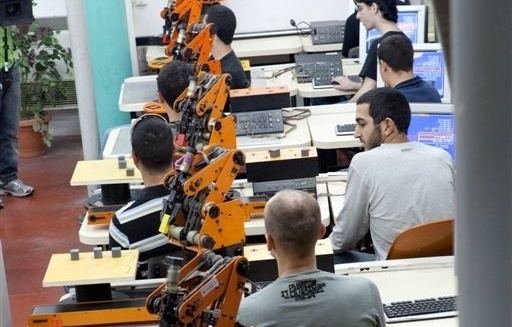
If anything is going to get the attention of college graduates who might otherwise head for a cubicle farm, it's loan help. Student loans have gotten out of control, yet students often have to rely on them to get through college, which is now seen as a basic requirement for most jobs even if the work has nothing to do with the student's actual field of study. Even a good salary can still be a tightrope for workers who have to pay hundreds each month to the loan company. Offer help! Give people lump sums, like bonuses, for staying a certain number of years. See if the school volunteering mentioned earlier might qualify for a state or federal government forgiveness program. Offer counseling, too, for those who want to consolidate loans or who have so many other costs (such as medical bills not covered by insurance or long-term care costs for an older relative) that they are still having trouble paying their loans. Make it easy for workers to reach these milestones to get help. Not only will the help be valuable, but the mere fact that you're acknowledging the student loan problem exists could get you some deeper employee loyalty.
And don't limit the help to a certain age group or to loans issued after a certain date. With the Great Recession doing such a number on people's incomes, there were a lot of Gen-X and older workers placing deferments and forbearances on their loans. They can benefit from help, too.
Action Item 14 - Keep Them Technologically Attached

It's a fact of life now that electronic devices are considered indispensable by many. Allow workers to have company-issued phones and tablets to keep in touch. Not only will that help accommodate workers who are better at texting and emailing questions than calling, it will allow workers to communicate more quickly. Instead of having to leave the line to report a problem, a worker can call it in from their own work station and then get back to work. Or, if the factory floor is too noisy, they can text it in. That's less time taken off work just to report something or ask a question.
The devices will also help you maintain a better record of communication. While you don't want to see like you're tracking your employees' every word, these records can save all of you a lot of trouble. A face-to-face conversation can result in misunderstandings if the information has to be repeated over several conversations between different people. But an email or text can be forwarded, keeping the original message intact.
Action Item 15 - Let Them Socialize

You're going to have some workers who want to separate work and social time. But you'll have others, especially younger workers, who want to socialize a bit on the job. Let them do this, to an extent. You need to stick to a production schedule and should make that schedule clear when someone is hired. But you should also allow flexible breaks that let groups of employees chat, and offer voluntary social activities (such as those exercise classes mentioned earlier) that let people talk more if they wish. You don't want to have the pendulum swing too far in either direction; your introvert employees aren't going to want to be forced to socialize, and your extrovert employees aren't going to want to be restricted to all work all the time.
Do create a comprehensive social media policy, though. You might not want selfies taken on the factory floor for competitor reasons, for example, or you might not want company business spread to those outside the company because of the risk of gossip. Plus, social media can be a black hole, sucking people's attention away from everything else. Place time limits on these things so you and your employees can strike a good balance.
Attracting a younger workforce to your manufacturing business requires some adjustments to traditional employment policies and practices. However, these changes eventually benefit the entire company and the surrounding community because your workforce will be happier and more stable. Your customers may even develop more loyalty to you as they see how well you're treating your employees. Remember that your customers will be hiring younger workers, too, and your reputation as a beneficial place to work may help you retain and attract more business. Start now to make these changes as quickly as possible.


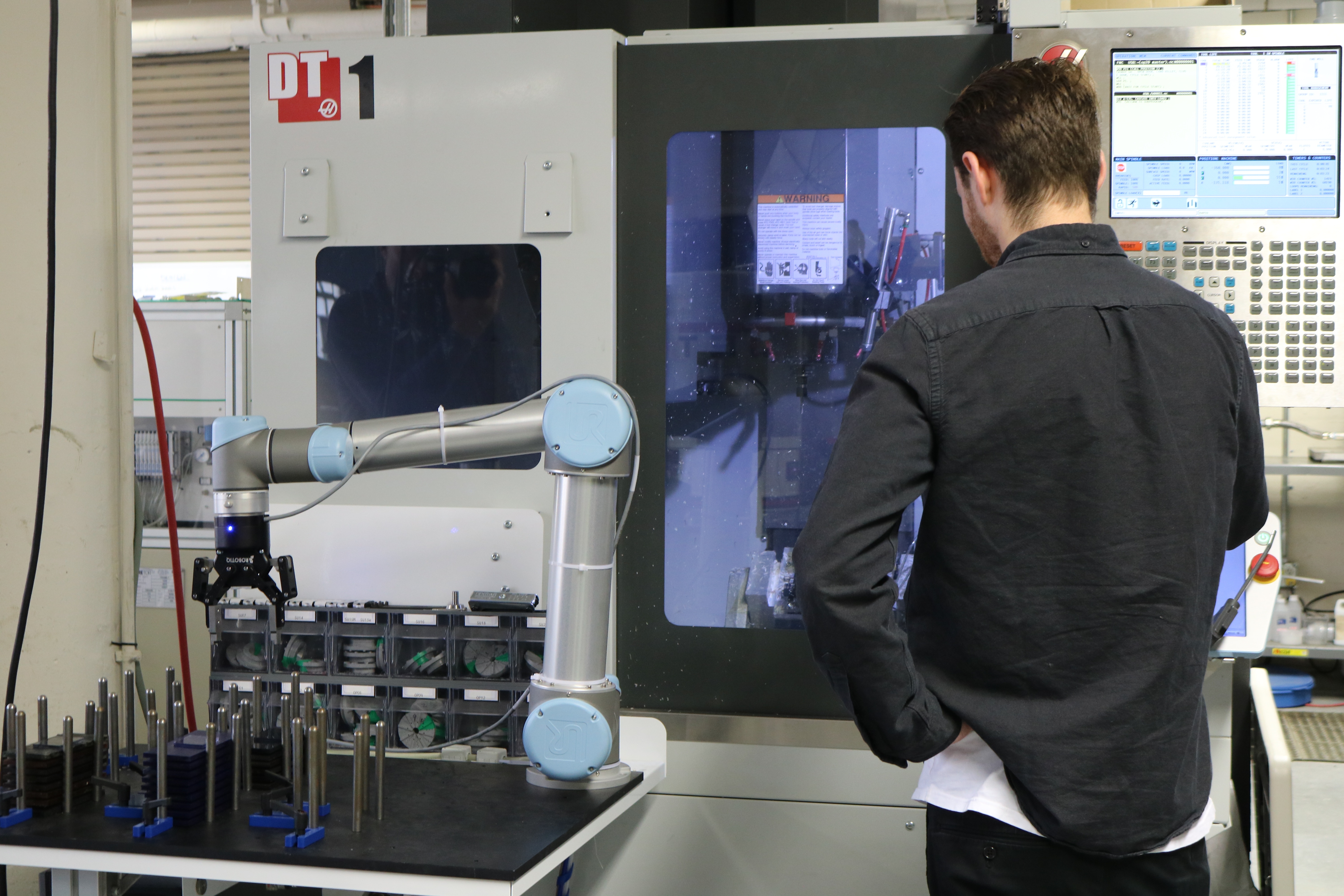



Leave a comment